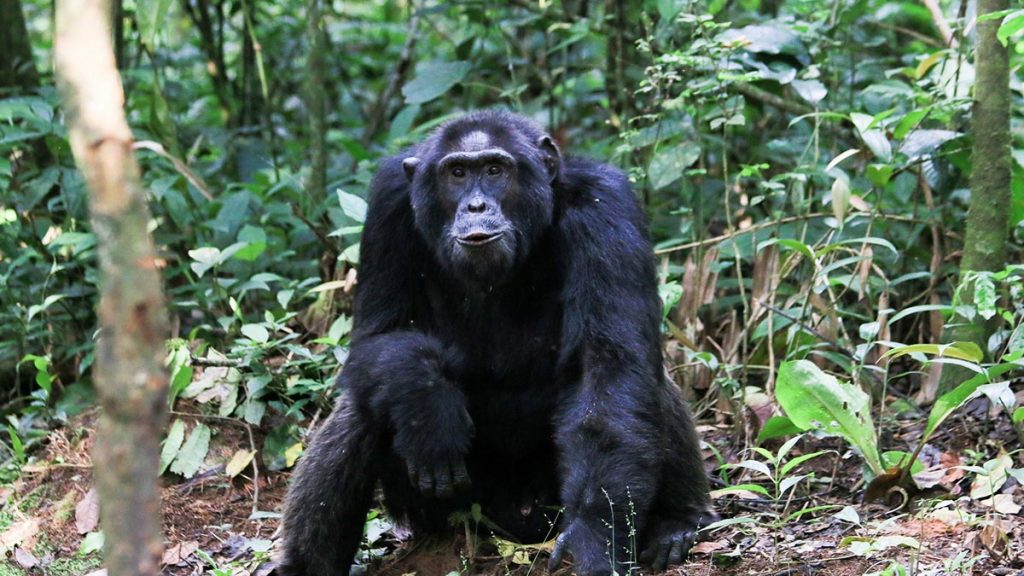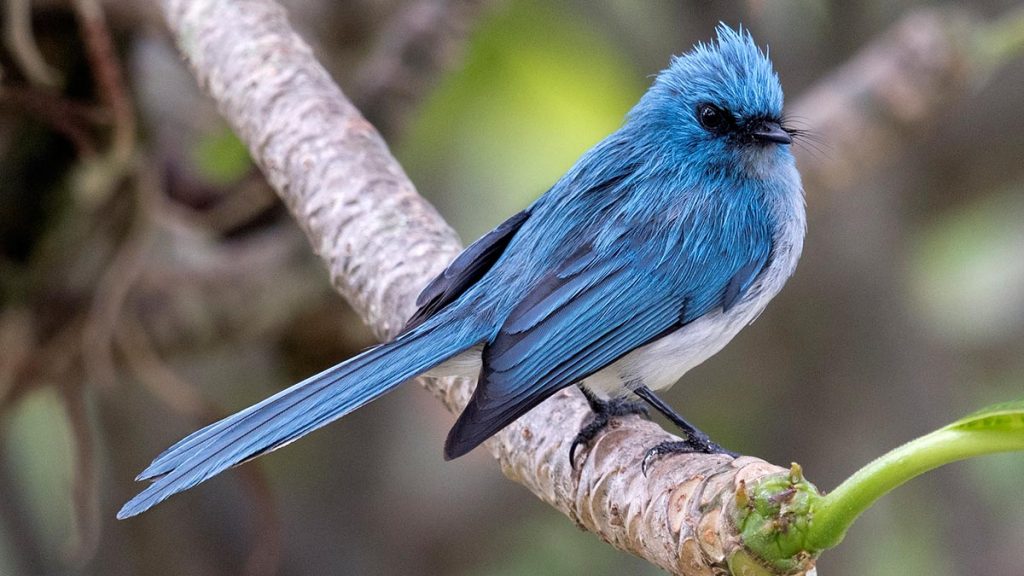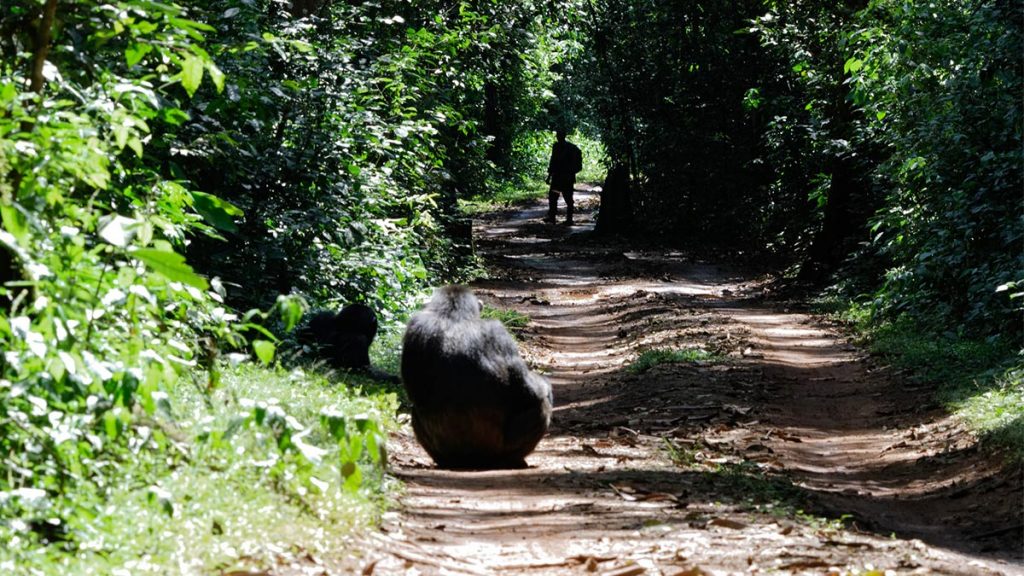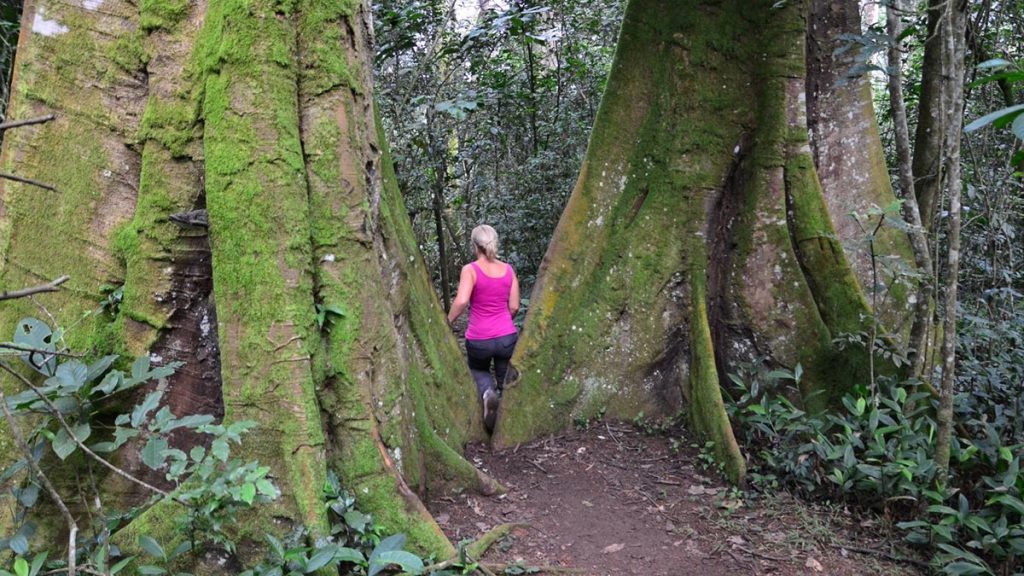
Kibale Forest National Park
Considered one of the loveliest and most varied tracts of tropical forest in Uganda, Kibale Forest National Park is interspersed with patches of grassland and swamp, dominates the northern and central parts of the park on an elevated plateau. The park is home to a total of 70 mammal species, most famously 13 species of primate including the chimpanzee. It also contains over 375 species of birds. Kibale adjoins Queen Elizabeth National park to the south to create a 180km-long corridor for wildlife between Ishasha, the remote southern sector of Queen Elizabeth National Park, and Sebitoli in the north of Kibale National Park.
The Kibale-Fort Portal area is one of Uganda’s most rewarding destinations to explore. The park lies close to the tranquil Ndali-Kasenda crater area and within half a day’s drive of the Queen Elizabeth, Rwenzori Mountains and Semuliki National Parks, as well as the Toro-Semliki Wildlife Reserve.
Areas of Tour Interest In Kibale Forest
Kanyanchu River Camp
Kanyanchu, in the central part of Kibale, is the main trailhead for the park’s famous forest walks, the most popular of which is the daily Primate Walk. There are 13 species of primate to search for, including habituated chimpanzees. Bird watching, nature walks for both kids and adults and guided night treks are also available here.
Sebitoli Forest Camp
Kibale’s secondary tourism centre in the north of the forest offers guided forest walks and a chance to encounter primates such as red colobus, black-and-white colobus, blue monkeys and vervet monkeys. Visitors may also spot a variety of aquatic, forest and savannah birds and enjoy views of the Mpanga River.

Primates
The diversity and density of primates in Kibale is the highest in Africa. The most famous of its 13 species is the chimpanzee, our closest relative. Kibale’s 1450 chimpanzees represent Uganda’s largest population of this endangered primate. The forest is also home to East Africa’s largest population of the threatened red colobus and the rare I’Hoest’s monkey. Other primates include the black-and-white colobus, red-tailed and blue monkeys, grey-cheeked mangabey, olive baboon, bush baby and potto.
Other Wildlife
At least 70 mammal species are present in the park though ground-dwelling animals are difficult to see in dense forest. An estimated 500elephants are present, along with buffalos, leopards, warthogs, bush pigs, golden cats and duikers. A keen observer may spot reptiles and amphibians as well as a colorful variety of 250 species of butterflies.
Birding
The park boasts more than 375 species of birds. Kibale specials include the African Pitta, Green-breasted Pitta, Afep Pigeon, White-naped Pigeon, Crowned Eagle, Red-chested Owlet, Black Bee-eater, Western Nicator, Yellow-rumped Tinkerbird, Little Greenbul, Brown-chested Alethe, Blue-breasted Kingfisher, African Grey Parrot, Scaly-breasted Illadopsis ,Brown Illadopsis, Black-capped Apalis, Blue-headed Sunbird, Collared Apalis, Dusky Crimsonwing, Purple-breasted Sunbird, Red-faced Woodland Warbler, Yellow Spotted Nicator, Little Green Bul, Black-eared Ground Thrush and the Abyssinian Ground-thrush.
Bigodi Wetland Sanctuary
Rich in biodiversity and beautiful scenery, the wetland is a birder’s paradise with about 138 species. Located outside the park in Magombe Swamp it also hosts eight species of primates including the black-and-white colobus, grey-cheeked mangabey, red-tailed, l’Hoest’s and blue monkeys, and olive baboons. Bushbucks and mongooses can also be found here. The sanctuary was set up to preserve the exclusive environmental features along with the wetland and is managed by the local community.
Kihingami Wetland
Located near Sebitoli in northern Kibale, this community-run project offers excellent bird watching and visits to the local tea estates and factory. Nature walks will bring you up close to primates such as the black-and-white colobus, red colobus and red-tailed monkeys. Other animals like otters, mongooses and bushbucks can be observed in the wetlands.

Kibale Wildlife and Birding Summary
Primates
The diversity and density of primates in Kibale is the highest in Africa. The most famous of its 13 species is the chimpanzee, our closest relative. Kibale’s 1450 chimpanzees represent Uganda’s largest population of this endangered primate. The forest is also home to East Africa’s largest population of the threatened red colobus and the rare I’Hoest’s monkey. Other primates include the black-and-white colobus, red-tailed and blue monkeys, grey-cheeked mangabey, olive baboon, bush baby and potto.
Other Wildlife
At least 70 mammal species are present in the park though ground-dwelling animals are difficult to see in dense forest. An estimated 500elephants are present, along with buffalos, leopards, warthogs, bush pigs, golden cats and duikers. A keen observer may spot reptiles and amphibians as well as a colorful variety of 250 species of butterflies.

Bird Watching in Kibale
The park boasts more than 375 species of birds. Kibale specials include the African Pitta, Green-breasted Pitta, Afep Pigeon, White-naped Pigeon, Crowned Eagle, Red-chested Owlet, Black Bee-eater, Western Nicator, Yellow-rumped Tinkerbird, Little Greenbul, Brown-chested Alethe, Blue-breasted Kingfisher, African Grey Parrot, Scaly-breasted Illadopsis ,Brown Illadopsis, Black-capped Apalis, Blue-headed Sunbird, Collared Apalis, Dusky Crimsonwing, Purple-breasted Sunbird, Red-faced Woodland Warbler, Yellow Spotted Nicator, Little Green Bul, Black-eared Ground Thrush and the Abyssinian Ground-thrush.
Bird watching tours start at 7am at Kanyanchu; you are advised to book in advance. Rare species include the Papyrus Gonolek, White-winged Warbler, White-collared Oliveback and Papyrus Canary.
Bigodi Wetland Sanctuary, located just outside the park, is home to 138 bird species which may be seen during guided walks along the boardwalk trail and viewing platforms. These could include the White-spotted Flufftail, Yellow-spotted Barbet, Hairy-breasted Barbet, Yellow-billed Barbet, Western Nicator, Grey-winged Robin-chat, White-tailed Ant-thrush, Brown-backed Scrub-robin, Black-and-white Shrike-flycatcher, Brown-throated Wattle-eye, Superb Sunbird, Brown-crowned Tchagra, Bocage’s Bush-shrike, Black Bishop, White-breasted Negrofinch and Black-crowned Waxbill among others.

Chimpanzee Tracking and Habituation in Kibale
Kibale’s most popular activity is the Kanyanchu Primate Walk. Thirteen species can be sought, and a good variety of diurnal monkeys invariably encountered, but the stars of this trail are the chimpanzees. Kanyanchu’s chimps have been tracked since 1993 and the chances of locating them are excellent. Guided walks start at 8am and 2pm and last an average of three hours, depending on various factors.
The full-day Chimpanzee Habituation Experience (CHEX) works with a chimp community which is undergoing habituation. Early visitors can watch chimps leaving their overnight nests between 6:00 – 6:30am before feeding, copulating, hunting, breastfeeding, resting, patrolling and displaying until it is time to build new nests around 7pm.
Cultural Encounters in Kibale
Kibale Association for Rural Environment Development (KAFRED)
Join a local guide on a walk through the Magombe swamp wetlands to enjoy the local wildlife, birds and vegetation. The daily life of the Batooro can be discovered during village walks, including stops at the village’s primary school, church and traditional healer.
KAFRED is a community-based organization which promotes local livelihoods and biodiversity conservation through ecotourism.
During the nature walk, a local guide will take you along the boardwalk through the Magombe swamp wetlands. You are likely to see wildlife at close-hand, including several of the 200 species of birds, eight varieties of primates and numerous butterflies, along with unusual swamp vegetation.
The daily life of the Batooro can be discovered during the village walks. The tour stops by the village’s primary school, church, and traditional healer. You will learn about the role of women in the village and traditional ceremonies, and the history of Bigodi is told through the story of the “Village of Two Tribes”, describing when the indigenous Batooro were joined by migrating Bakiga from southwestern Uganda in the 1950s.
Income from this activity is invested in education, health, sanitation and improving the livelihood of local residents. It is also used to help raise awareness of the value of biodiversity through music, dance, and drama performances at local schools. In 2010, KAFRED they won the prestigious UNDP’s Equator Initiative Award.

Hiking/Nature Walks in Kibale
When chimpanzees and other forest residents rest up at dusk, a nighttime shift of rarely seen creatures becomes active. Night walks through the darkened forest use powerful torches to seek nocturnal creatures such as the potto, bushbaby, nightjar, cricket and tree hyrax, with its chilling shriek, as well as the occasional civet or serval cat. Night walks leave the camp at 7.30pm and last between one and a half and two hours.
Location: Uganda
Nearest city: Fort Portal
Coordinates: 00°30′N 30°24′ECoordinates: 00°30′N 30°24′E
Area: 776 km2 (300 sq mi)
Established: 1993
Governing body: Ugandan Wildlife Authority
